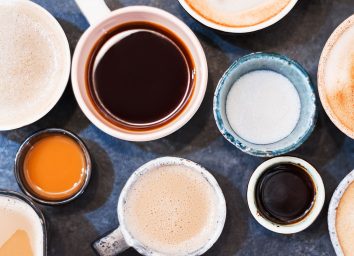9 Mistakes Everyone Makes When Brewing Coffee, According to Experts
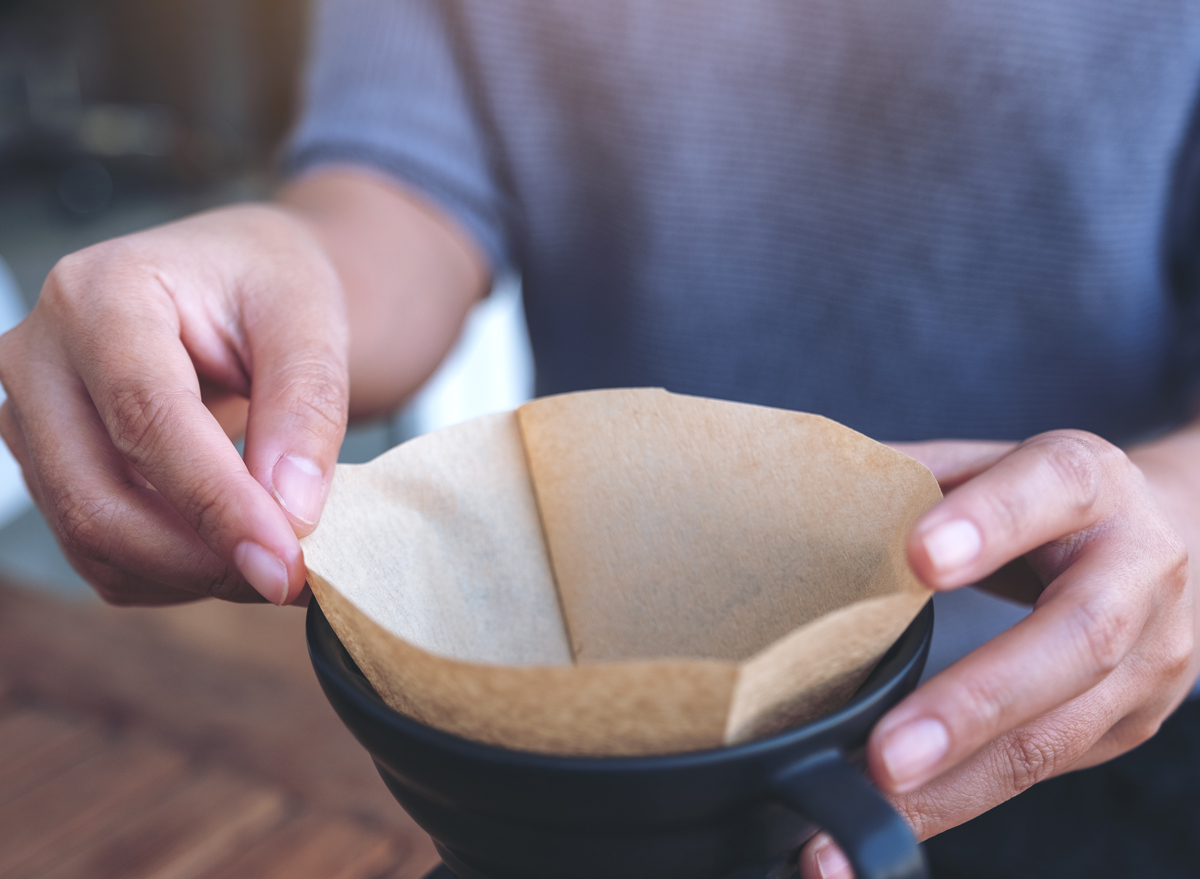
Most Americans can’t start their day without a cup of coffee. In fact, according to the National Coffee Association (NCA), the caffeinated beverage is only getting more popular from coast to coast.
A March 2020 NCA survey revealed that overall coffee consumption is up by 5% across the nation since 2015. Additionally, the data showed that 7 in 10 Americans drink coffee every week, and most drink just over three cups per day. (If you’re drinking more than that, you should probably familiarize yourself with these Ugly Side Effects of Drinking Too Much Coffee, According to Science.)
While millions of Americans typically get their caffeine fixes from Starbucks, Dunkin’, and other coffee-focused chains, the ongoing coronavirus pandemic has forced many to brew at least some coffee at home.
With that in mind, we thought it would be useful to share the most common mistakes people make when brewing a cup of joe, according to baristas and experts. Making these mistakes may not completely ruin your cup of coffee or kill that much-needed caffeine buzz, but why settle for just a good cup of coffee when you can have a great one?
Keep reading to see the pros’ advice, and for more on healthy eating, don’t miss 7 Healthiest Foods to Eat Right Now.
Your coffee beans aren’t fresh enough.

“The fresher the beans, the richer the cup. Buying freshly roasted coffee and storing it properly to maintain its freshness makes a huge difference. The time between coffee roasting and brewing is critical to the taste of the final pour. Less time means more flavor and character,” advises Patrick Main, senior research and development manager of beverage at Peet’s.
“Yet most people buy beans with no information about when the beans were roasted. For those looking to up their at-home coffee game, checking the roast date is the only way to ensure you’re getting the freshest beans for the best-tasting brew.” The date may be anywhere from the back to the bottom to the front, like Peet’s does.
You’re not grinding the coffee beans just before you brew them.
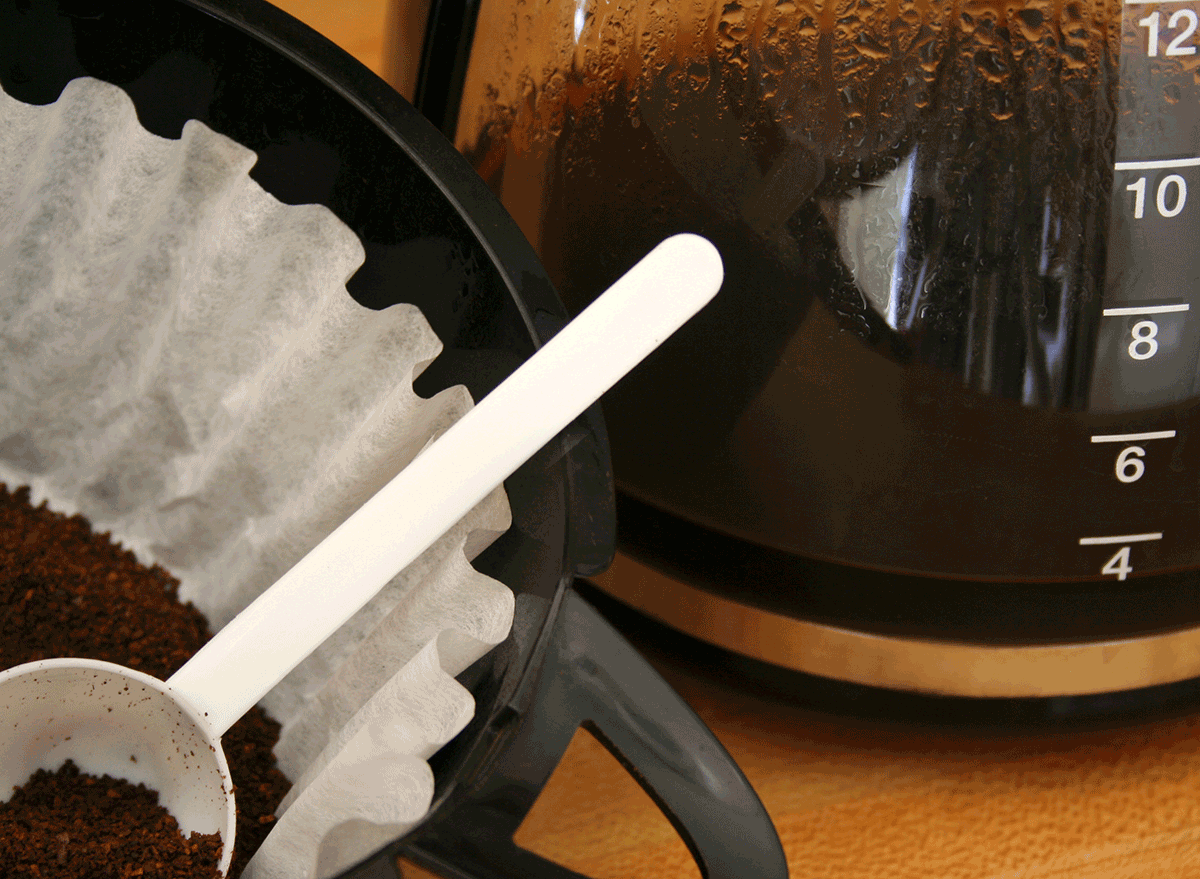
This builds on the less-than-fresh beans mistake, according to Shabbir Nooruddin, a self-taught barista, and coffee blogger. “Once you grind coffee beans, they begin to degas even faster, and after grinding, you’ve just got around 30 minutes to an hour of freshness left,” she explains. “Ideally, you have to start the brewing immediately after grinding.”
You’re not rinsing the coffee filter before you use it.
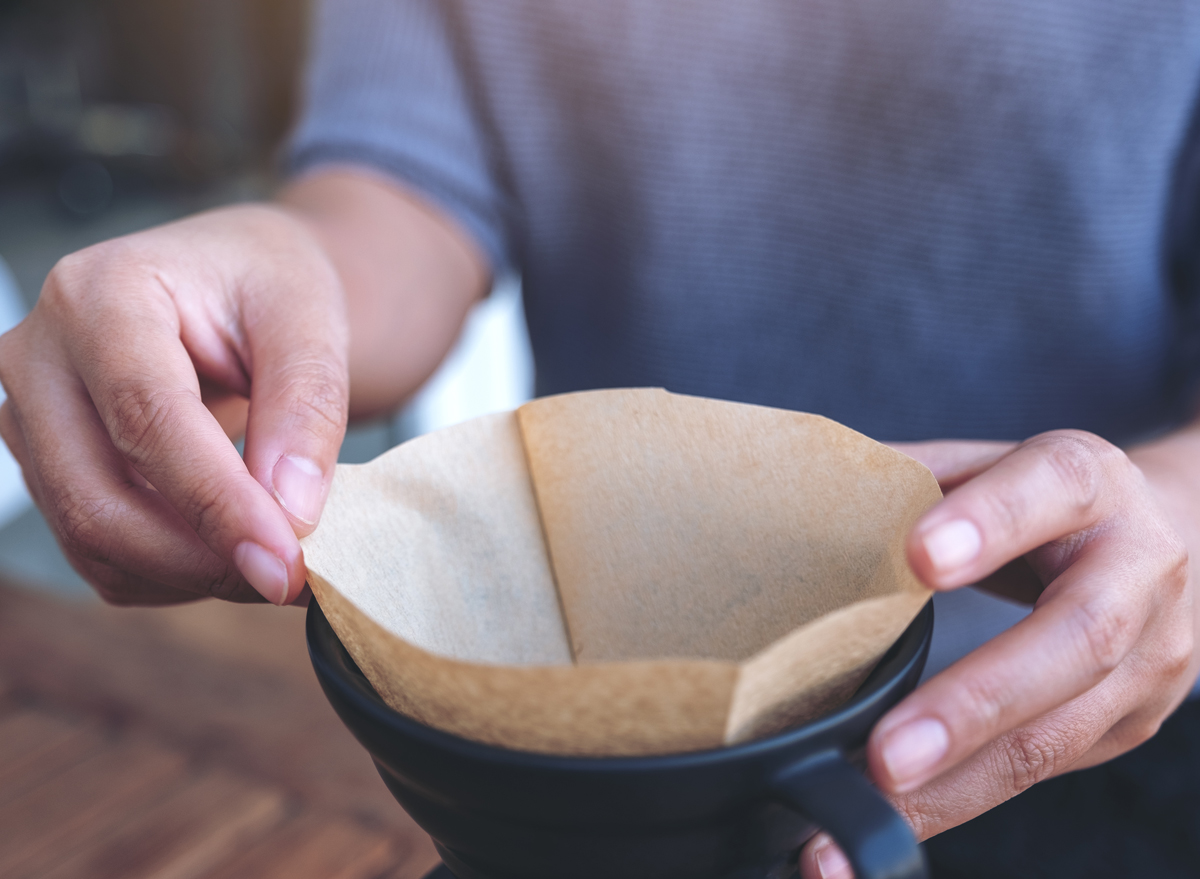
“By now, most people have learned that it’s essential to buy quality beans and grind them at home. However, a mistake I see frequently is that people don’t rinse the paper filter before brewing,” says Asser Christensen, Q Grader and founder of The Coffee Chronicler. “Run a cup of hot water through the filter before brewing, and the coffee will taste a lot cleaner. If you’re using brown filters, it’s especially vital to pre-rinse since they tend to have a cardboard flavor that can ruin even the most exquisite bean.”
Need coffee filter suggestions? “I always recommend using oxygen-bleached filters from brands such as Hario, Cafec, or Melitta, since they have fewer off-flavors,” Christensen adds. “Many people think that bleached paper filters are harmful to the environment, but oxygen-bleaching is a sustainable technique.”
You’re using the wrong brew method.
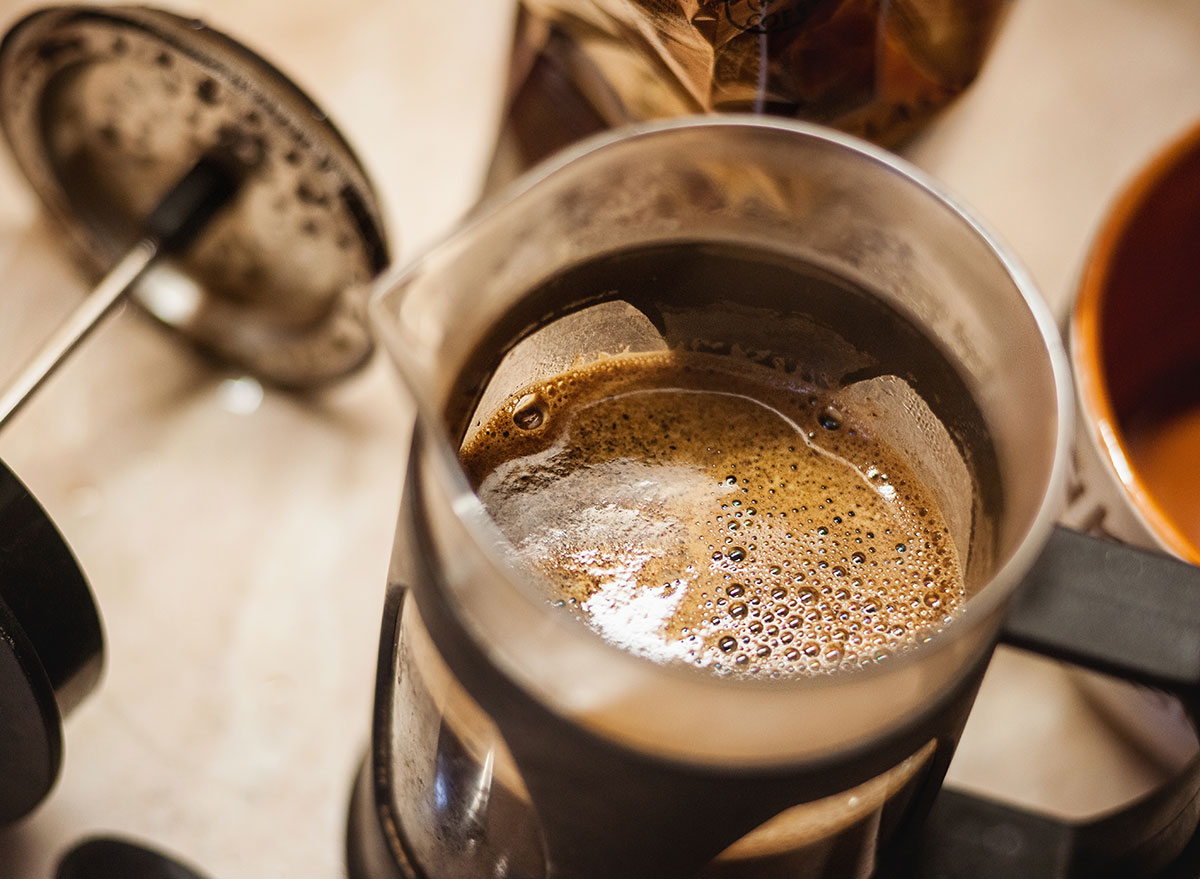
“Even if you’re using the exact same coffee bean and roast, every brewing method will bring out a different flavor. Some brew methods make very strong, intense cups, others make very balanced cups, and others make very light, mellow cups,” says Nooruddin.
According to the java expert espresso/moka pot coffee is intense and acidic, while coffee made with a French press is rich and acidic. On the other hand, the pour-over/drip method yields rich and balanced coffee and an AeroPress creates a rich and mellow cup. For a light and mellow caffeine fix, Nooruddin recommends a cup of cold brew. (Related: The #1 Way to Make Your Coffee, According to a Barista)
Or the wrong roast.
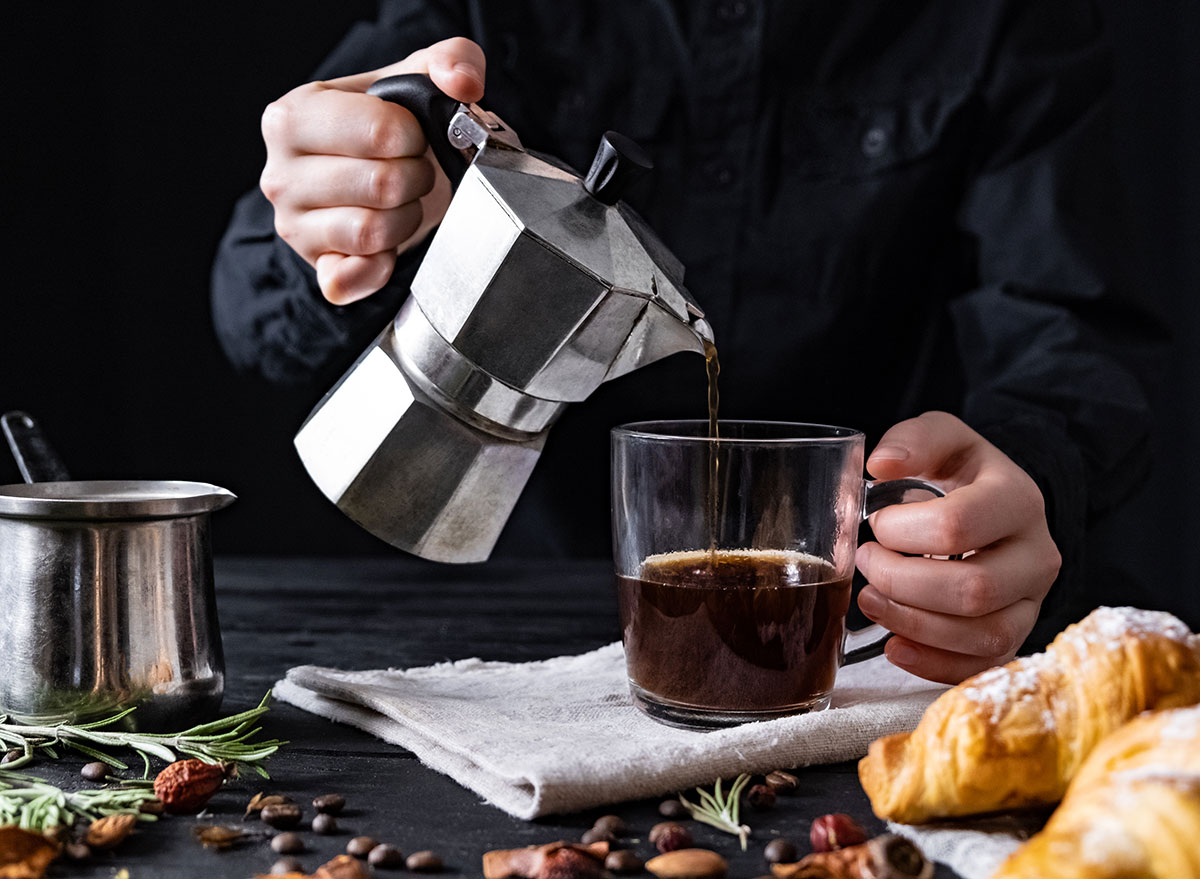
“Finally, you may end up not liking a particular coffee because of the way the bean was roasted,” Nooruddin says. “Light roasts are just like the name: very light and bright, and you don’t want to use them with the more intense-resulting brew methods. Medium roasts are very balanced and work well with any brew method. These are the Goldilocks roasts and you can use them up or down the spectrum. Dark roasts are very intense and bittersweet, and work best with french press or espresso, though you can certainly brew a pour-over as well.”
You’re not using hot enough water.
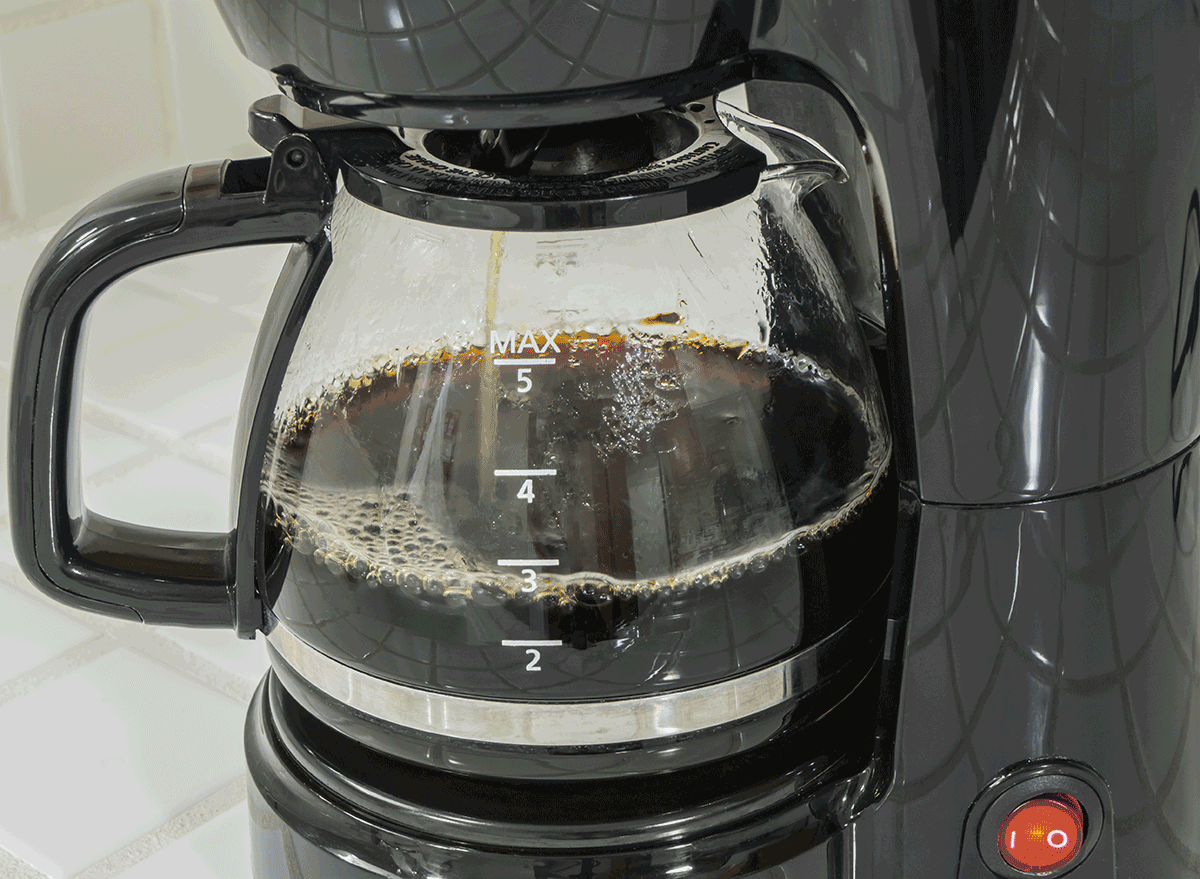
“It’s a bit like goldilocks. If you use water that’s too hot, you can end up with a bitter, over-extracted brew. If you use water that’s too cool, you can end up with a sour, under-extracted brew,” explains David Yake, the director of sales and sustainability at Tony’s Coffee.
“When it comes to brewing coffee, water temperature is VERY important and heavily influences the flavors you experience in the cup. In fact, the most common shortcoming of home coffee makers is that they don’t get the water hot enough. Most inexpensive home coffee makers only heat the water to 190-195 degrees Fahrenheit, if you’re lucky,” he adds. “I recommend using water that’s between 200-205 degrees Fahrenheit. That translates to roughly 30 seconds off the boil, depending on your elevation.”
If you want to be even more exacting and heat your water based on your roast, Yake has some pointers. “If you want to get really nerdy, it’s smart to use slightly cooler water when brewing a dark roast (i.e. 200, or even 195 degrees, for a very dark roast) and slightly hotter water (205 degrees) when brewing a light roast,” he says. “Lighter roasts require a bit more coaxing to get a full extraction.”
An easy hack: if you haven’t budgeted for a new coffee maker, Yake advises that you can try using a finer grind, “which can offset the cooler water and produce a stronger cup of coffee.”
You’re not using chemical-free water.
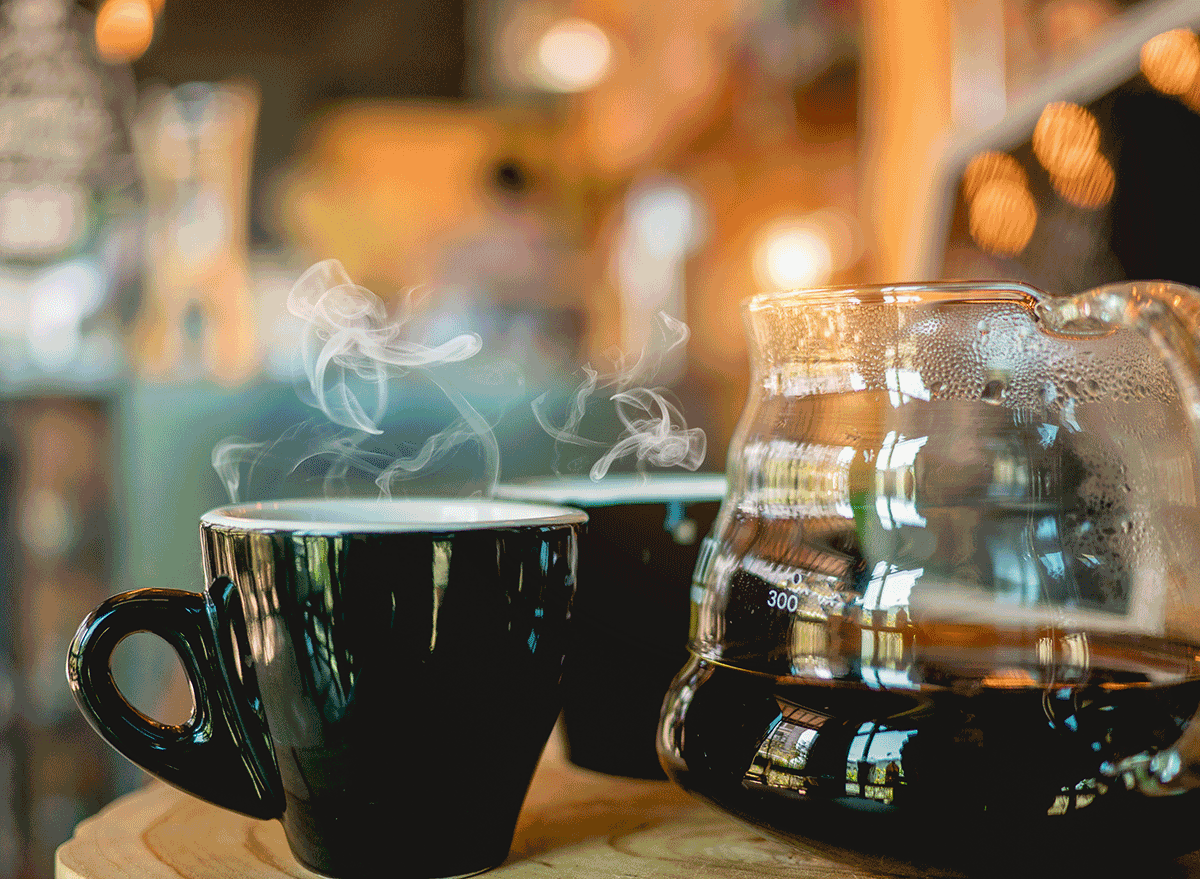
“A cup of coffee is mostly water, and the chemicals in your tap will color the flavor of the cup,” declares David Lewis, founder of Kitchen Ambition. “There are a variety of contaminants in most public water supplies. Among the most common is chlorine, which cities will add to control microbial growth. From a public health standpoint, it makes sense, but be aware that chemical additives may be the most expressive part of your cup.”
So what should you do about this issue? “There are a lot of options to remove chemical contaminants and associated flavors from your morning joe,” Lewis adds. “Pick up a jug of filtered water from the grocery to test the difference. If you find that filtered water is a substantial improvement, there are a variety of cost-effective pitchers and under-sink filters that you can use for a long-term fix.”
You’re over-steeping your coffee.

“If you brew coffee using the immersion method (such as in a French press), you need to steep the coffee grounds with hot water to extract the flavour. For a French press, the ideal time is about 3-4 minutes. Once this amount of time has passed, you should pour all the coffee out immediately,” Sean Yew, a specialty coffee barista and founder of TheHeartyBrew, notes.
“If you let it sit whilst you have breakfast or answer a call, the coffee grounds will continue to steep. The brew is still going on as the grounds are still in direct contact with hot water. As a result, the coffee will get over-extracted and turn bitter. Many people dislike a French press due to its reputation for producing bitter, murky coffee – but this is only if you steep the coffee too much,” he continues. “Avoid this, and only brew your coffee for the set amount of time. The taste will improve drastically.” Just make sure you’re using a filter, because not using one is The Most Dangerous Way to Drink Your Coffee, According to Science.
You’re not properly storing your coffee beans.
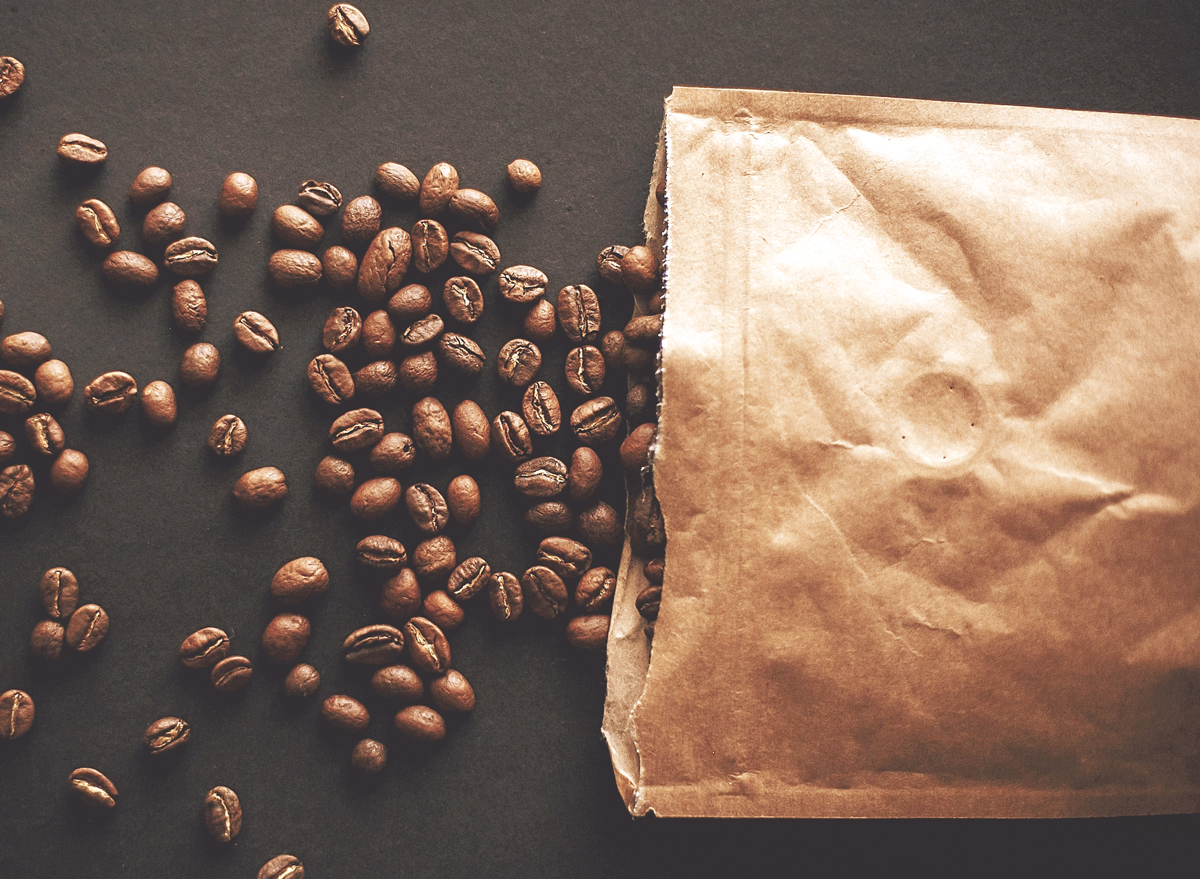
“The worst thing you can do for the preservation of your coffee beans, is to leave them in the bag they came in. It’s also what most people do,” warns Tom Bolland, founder of HappyBarista. “These bags are vacuum-sealed, as oxygen and moisture are enemies of coffee beans. As soon as that bag is open, air is going to get in, no matter how well you fold the top.”
He adds: “The best thing you can do to keep your beans fresh for as long as possible, and therefore allowing you to brew the freshest coffee possible, is to store them in an airtight container, in a cool, dark place. I use a glass rubber-sealed jar, kept in a dark cupboard. Oxygen, light, moisture, and heat are going to rob your coffee beans of all their beautiful flavors, so you’re better off keeping them away from these elements.” For more on java, check out What Happens To Your Body When You Drink Coffee.
